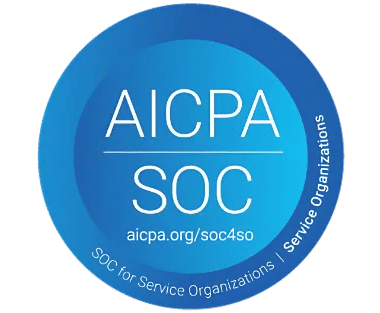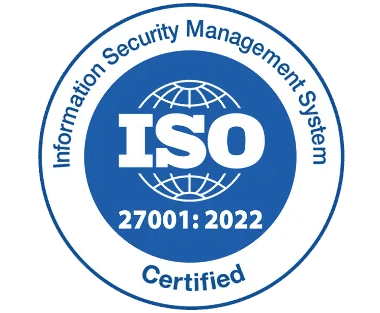Best Performance Management Software for Small Business in 2025
Discover the top performance management tools designed to help small businesses thrive in 2025 with smarter goal tracking and employee development.

In small businesses, being quick and having the right people is super important. That’s why managing how employees perform is not just a nice-to-have it’s a must. The right performance management software helps small teams set clear goals, give feedback on time, keep track of progress, and grow without making things complicated.
In 2025, the best performance management software for small business is designed to be easy to use, cost-effective, and powerful enough to support productivity, retention, and team alignment even as you scale.
Here’s why small businesses are investing in performance management tools this year, and what to look for in a solution built for your size and speed.
Why Small Businesses Need Performance Management Software
In small businesses, being quick and having the right people in the right roles is everything. Unlike large enterprises with sprawling HR departments, small teams juggle multiple hats. That’s why managing performance is not a luxury it is a necessity.
Performance management software helps small businesses set clear goals, track progress, give timely feedback, and foster a culture of accountability without overcomplicating things. The right tool becomes your manager’s best friend, your team’s daily guide, and your secret weapon for retention and growth.
The Real Challenges of Managing Performance in Small Businesses
Small businesses operate differently than large enterprises. Roles overlap, budgets are tight, and everyone is expected to do more with less. This creates unique challenges when it comes to performance management.
Time Constraints: Managers often have to balance leadership and hands-on tasks, leaving little room for formal performance tracking.
Lack of HR Structure: Many small businesses do not have dedicated HR staff, making it difficult to run consistent appraisals or gather feedback.
Growth Pressure: As teams grow quickly, it becomes harder to keep communication clear and expectations aligned.
No Centralized System: Without a proper tool, performance data is scattered across emails, spreadsheets, or not documented at all.
A smart, small-business-friendly performance management solution solves these challenges by making the process efficient, clear, and consistent.
Align performance goals with contract outcomes to ensure every deal delivers measurable impact.

Benefits of Best Performance Management Software for Small Business
1. Align Small Teams with Business Goals
In small businesses, employees usually take on many different tasks. One day they might be helping customers, and the next they are working on operations or marketing. Because of this, it is really important that everyone understands the company’s goals and how their work fits in.
Performance management software helps small teams stay on the same page. It lets you set clear goals for each person that match the bigger business goals. This way, employees know exactly what they are working toward and why it matters. It also helps reduce confusion, avoid wasted effort, and give people a stronger sense of responsibility. When everyone is aligned, small teams can move faster, work smarter, and achieve more together.
2. Enable Frequent Feedback and Coaching
Gone are the days when managers waited until the end of the year to talk about how an employee was doing. That old model just does not work anymore especially in small businesses where things move fast, and people need support often.
In 2025, small businesses are using performance management tools that make feedback simple and ongoing. These tools help with:
- Monthly check-ins between managers and employees
- Real-time feedback to address problems or praise good work right away
- Recognizing both big wins and small daily efforts that make a difference
This regular communication helps employees stay focused, feel appreciated, and know what they can do better. It also builds stronger relationships between team members and managers. Plus, it cuts down on paperwork and makes performance reviews feel more natural not like a once-a-year chore. With the right system, small teams stay connected, grow faster, and work more effectively.
3. Gain Insights with Built-In Dashboards
Small business owners and managers do not have time to dig through spreadsheets or guess how their team is doing. They need quick, clear answers. That is where performance software with built-in dashboards becomes a game-changer.
These dashboards give leaders an easy-to-read view of how the team is performing at any time. The best tools offer features like:
- Goal progress tracking, so you can see who’s on track and who might need help
- Productivity snapshots that show how work is moving across projects or roles
- Historical performance trends to understand how an employee has grown over time or where improvements are needed
With this kind of data at your fingertips, you can make smarter decisions whether it’s time to promote someone, offer extra training, or fix a broken process. These insights take the guesswork out of managing people and help small teams grow with confidence.
4. Save Time with Automation
Small business teams are already juggling a lot managing clients, handling operations, and growing the business. The last thing you need is to waste time on manual performance reviews, scattered goals, and random feedback notes that are hard to track. That’s where automation comes in.
A dedicated performance management platform takes care of the routine tasks that normally eat up hours of your time. With the right system in place, you can automatically manage things like:
- Appraisal cycles that follow a set schedule without needing to be reminded manually
- Automated notifications and reminders so managers and employees never miss a review
- Easy collection and storage of feedback, whether it’s from a manager, peer, or even a client
By automating these tasks, your team can stay focused on doing great work not chasing emails or spreadsheets. It also helps make sure your performance process stays consistent as your business grows. Everyone gets the same attention, the same process, and the same opportunity to succeed which is key when building a strong and fair team culture.
5. Support Growth Without Complexity
As your small business grows, so does your team. What worked when you had five people on your staff might not work when you have twenty. That means your performance management process needs to grow with you without becoming confusing or expensive.
The best performance management software for small businesses in 2025 is built with this in mind. It offers everything you need to support a growing team, including:
- Simple user setup, so adding new employees takes just a few clicks
- Customizable templates for reviews, goals, and feedback that fit the way you work
- Tiered pricing plans that won’t break your budget even as your team expands
With the right software, you get the structure and clarity of a professional system without all the extra features you will never use. You are not stuck paying for tools made for huge corporations. Instead, you get a solution that grows at your pace helping you keep performance on track, even as your team gets bigger.
How We Evaluated and Chose the Best Performance Management Software for Small Businesses
To find the best solution in 2025, we looked at real-world needs of small businesses and focused on features that actually matter:
User-Friendly Setup: No IT help needed
Goal Tracking & Review Templates: Clear, fast, and customizable
Real-Time Feedback & Check-Ins: No more waiting till year-end
Insightful Dashboards: Performance data made simple
Microsoft 365 Integration: Use it where you already work
Fair Pricing: Transparent and tailored for growing teams
We filtered out bloated enterprise tools and free apps that fall flat. What remained? A smart, flexible solution designed for your business.
Use Case: Managing a 10-Person Remote Team with PM365
Imagine a growing digital agency with a fully remote team of 10 employees. The team is spread across different time zones, handling everything from content writing and social media to project management and client communication. Like many small businesses operating remotely, staying aligned, motivated, and connected is a daily challenge.
Before using performance management software, team updates were scattered across emails and chat threads. Performance reviews were inconsistent, and it was hard to track progress or identify coaching needs. That all changed with Performance Management 365.
Here’s how PM365 helps this team stay on track:
- Quarterly Goal Setting: Each team member defines clear, measurable goals every quarter directly tied to client deliverables and business KPIs. This ensures everyone knows what success looks like and how their work contributes to the agency’s growth.
- Bi-Weekly Check-Ins: Managers use PM365’s built-in check-in tools to hold structured one-on-one conversations every two weeks. These quick virtual touchpoints help address roadblocks, recognize wins, and realign priorities when needed.
- Automated Peer Feedback: After every major campaign or project, PM365 automatically requests feedback from teammates. This creates a continuous loop of improvement and recognition, helping team members learn from each other and build trust even when they’ve never met in person.
- Insightful Reports: Leadership gets access to real-time dashboards showing goal completion rates, productivity trends, and individual growth patterns. They can quickly spot high performers, identify skills gaps, and decide who needs more support or who’s ready for new responsibilities.
The result?
A more engaged and connected remote team. Employees feel valued and supported. Managers have the tools to lead with clarity. And the agency sees improved retention, faster project delivery, and better client outcomes all without needing a full-time HR manager or complex enterprise tools.
How to Implement Performance Management Software in Your Small Business
Rolling out performance management software in a small business does not need to be overwhelming. With the right approach, you can start seeing value in just a few weeks. Here’s a simple yet effective implementation plan to help you get started:
1. Choose the Right Tool
Start by selecting a performance management solution that fits your business size and style. Look for key features like ease of use, mobile accessibility, customizable templates, and integration with tools you already use especially Microsoft 365. A simple, intuitive platform like PM365 reduces the learning curve and supports quicker adoption across the team.
2. Train Your Team
Even the most user-friendly software needs a brief introduction. Organize a short training session or walkthrough for your team to show them how to set goals, provide feedback, and use the dashboards. Focus on real scenarios they deal with daily. When people understand how the tool helps them, they are far more likely to use it regularly.
3. Set the First Goals
Begin with clear, realistic quarterly goals aligned with your business priorities. Help each team member understand how their personal goals contribute to larger company objectives. This alignment builds accountability and motivation, especially in small teams where every contribution counts.
4. Establish a Feedback Rhythm
Decide on a feedback cadence that works for your pace weekly, bi-weekly, or monthly. Use built-in check-in features to encourage regular conversations between managers and employees. Frequent feedback helps teams stay agile, correct course early, and celebrate small wins that boost morale.
5. Use Dashboards to Guide Decisions
Leverage real-time performance dashboards to monitor goal progress, spot top performers, and identify areas needing improvement. These insights help you make data-driven decisions on promotions, training, or process changes without relying on gut instinct or scattered spreadsheets.
What to Look for in a Performance Management Tool
Choosing the right platform is key. Here is what small businesses should prioritize:
- Easy setup and user-friendly interface
- Goal tracking and review templates
- Feedback and coaching tools
- Reports and performance insights
- Integrations with tools you already use (like Microsoft 365)
- Affordable pricing with no hidden fees
Avoid systems that feel like they were built for large corporations. Small teams need tools that are quick to learn, flexible to use, and cost-effective.
Why Performance Management 365?
Performance Management 365 is designed specifically for modern small businesses that need to grow fast, stay organized, and keep their teams motivated all without adding extra stress or overhead.
Here’s why it stands out from other tools in 2025:
- Fast onboarding and easy goal setup mean your team can get started in minutes, not days. No need for special training or long learning curves.
- Real-time feedback and check-in features help managers stay connected with employees and address performance issues or celebrate wins as they happen.
- Seamless Microsoft 365 integration allows your team to work within the tools they already use, making performance management feel like a natural part of daily work.
- Affordable pricing is built to fit small business budgets, so you get powerful features without paying for enterprise extras you do not need.
- Insightful reports give you a clear view of team progress, productivity trends, and goal alignment without the need for complicated dashboards or data tools.
Whether you are managing a small team of 5 or scaling up to 50, Performance Management 365 grows with you. It gives your team the structure they need, the flexibility they want, and the results your business depends on all while keeping things simple and fast.
If you are ready to take your team’s performance to the next level without slowing down your operations, PM365 is the tool built just for you.
Conclusion
In 2025, the best performance management software for small businesses is simple, smart, and designed to grow with your team. It helps employees stay focused, motivated, and aligned with business goals all while saving time and reducing manual work.
For small teams, performance management is no longer just an HR task it is a key part of business growth. With the right tool, you can set clear goals, give timely feedback, track progress, and make better decisions, without adding complexity.
Ready to Grow Smarter?
Empower your small team with the right performance tools built for speed, clarity, and success.
Frequently Asked Questions
What makes performance management software essential for small businesses?
It helps small teams stay focused, aligned, and productive. By streamlining goal setting, performance reviews, and real-time feedback, the software makes it easier to track progress, recognize achievements, and fix issues early. It also gives business owners quick insights through dashboards, so they can make better people decisions without digging through spreadsheets. As your team grows, a performance tool ensures consistency, saves time, and keeps everyone moving in the right direction.
Is it affordable for small businesses?
Yes. Performance Management 365 is built for small business budgets with flexible pricing that grows with your team. You get essential features like goal tracking, feedback, and reporting without paying for unnecessary extras. It delivers real value without the high cost.
Can this software grow with my team?
Yes. Performance Management 365 is built to scale as your team grows. You can easily add users, customize workflows, and adapt processes without needing a new system. It grows with your business, keeping things simple and consistent at every stage.
Does it support remote and hybrid teams?
Yes. Performance Management 365 is built to support modern work environments whether your team is fully remote, hybrid, or spread across locations. It allows managers and employees to set goals, give feedback, and conduct reviews from anywhere, at any time. With cloud access and integration with Microsoft 365, your team can stay connected, aligned, and productive no matter where they work.
What makes PM365 different from free or basic tools?
PM365 is designed specifically for structured performance management, not just basic tracking. It offers built-in templates, automated review workflows, real-time feedback, and performance insights all tailored to small business needs. Unlike free tools, it provides consistency, clarity, and growth-ready features without added complexity.





_svxLrd-8yH.png)

_2VYSFUTN5m.png)

_JiluXJRGNl.svg)

_2djTKNocf.png)





_Rapo0hRMBy.png)

















